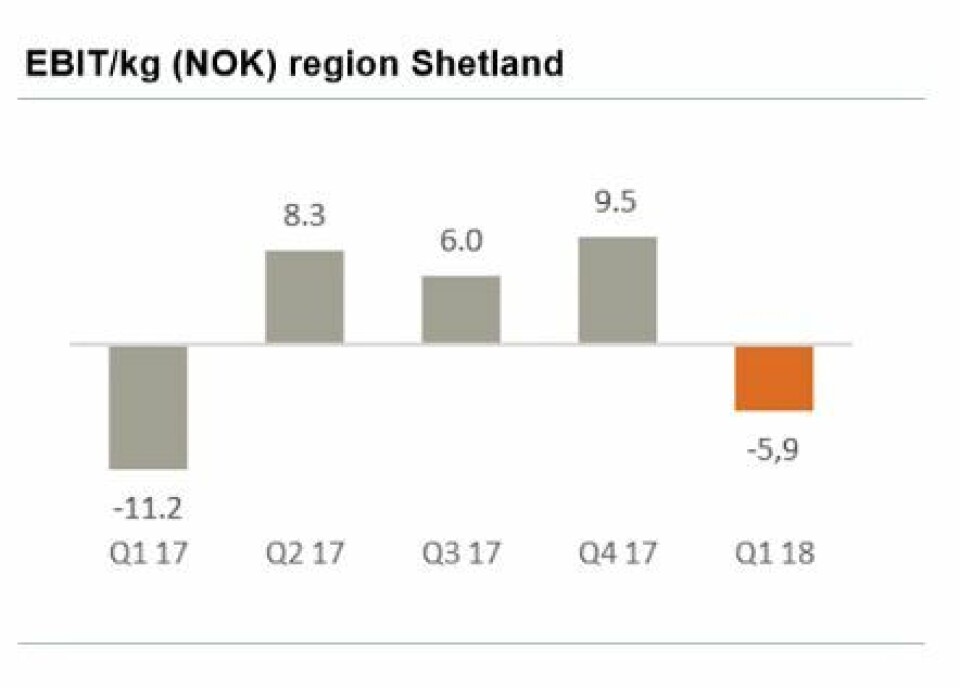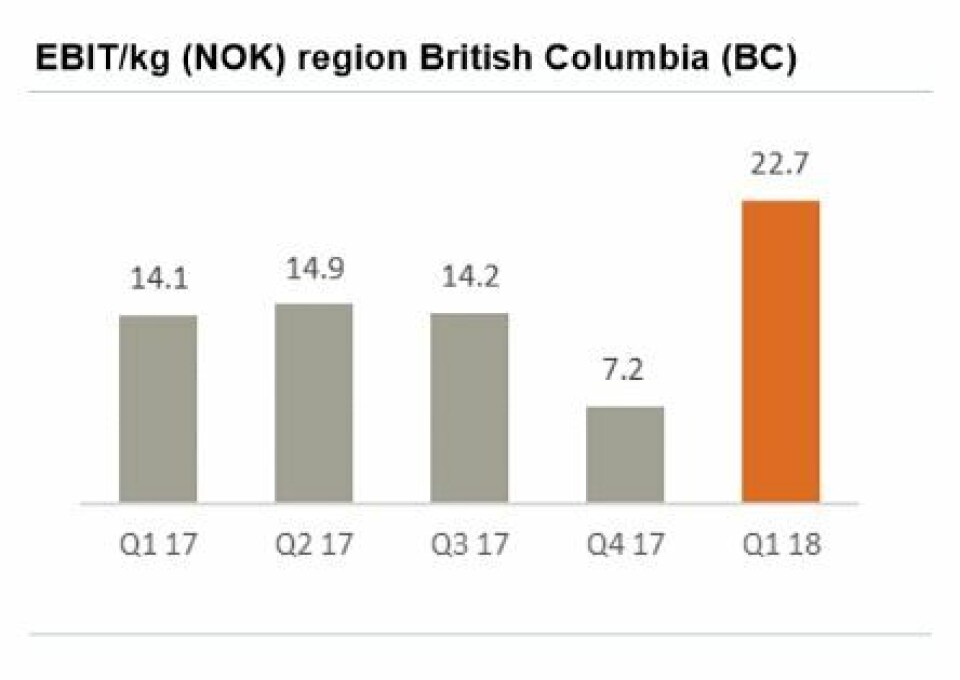
Feed barge sinking scuppers Grieg Shetland’s Q1 profits
The costs associated with raising a sunken feed barge have caused a first-quarter loss for Grieg Seafood Shetland.

In its report for Q1 2018, Grieg said provision for costs of raising the barge, after an assumed insurance settlement, was NOK 10 million (£921,000), negatively affecting the Shetland operation’s EBIT/kg by NOK 8.33. EBIT before fair value adjustment of biomass was NOK -5.9 per kg for the quarter, up from NOK -11.2 per kg in Q1 2017.
Harvested volume in Shetland in Q1 was 1,201 tonnes, compared to 1,293 tonnes in the corresponding quarter last year, while total sales revenue amounted to NOK 86.8m (NOK 82.1m Q1 2017).
Costs in Shetland remain high, mainly because of issues with lice and algae, with low harvest volume contributing to increased fixed costs per kg.
Harvest volumes will increase in Q2 and the cost per kg is therefore expected to drop, although the cost level in Shetland remains assessed as “high” by the Norwegian company.
Lice under control
Sea production was stable throughout Q1, the report stated. The results of heated water treatment are good, and the sea lice situation is under control. However, low seawater temperatures have resulted in somewhat reduced growth.
“The aquaculture industry in Shetland has over time suffered from biological challenges,” said the report. “The industry is collaborating to mitigate these challenges and Grieg Seafood cooperates closely with the other sea farmers in the region in order to establish a long-term, stable marine biology.
“Extended fallowing time, cleaner fish and monitoring of algae are measures to be prioritised going forward.”

In British Columbia, Grieg harvested 3,758 tonnes in the quarter, compared to 1,235 tonnes in Q1 2017.
The Canadian operation reported reduced cost as a result of stable and good biology, which it attributed to its long-term focus on algae handling and optimal feeding.
Cost is expected to be stable in Q2, and guided harvest volume for 2018 increased by 1,000 tonnes. Smolt production in BC is going according to plan.
In the Rogaland region of Norway, a low harvest volume was reported compared to Q4 2017, with pancreas disease leading to the harvest of weak fish. Low sea temperatures also reduced production in the quarter, and 2018 harvest guidance has been reduced by 1,000 tonnes.
Grieg’s big smolt strategy is moving forward as planned.
More smolts in the sea
In Grieg’s other Norwegian region, Finnmark, low harvest volume compared to Q4 2017 resulted in increased cost. The minor reductions in production were caused by lower-than-normal sea temperatures. Underlying biology remained stable.
Its growth strategy is moving forward as planned in the region, with new sites established, increased smolt capacity and more smolts in the sea.
Overall Grieg harvested 11,433 tonnes in Q1 and expects to harvest 21,400 tonnes in Q2, and is sticking with its forecast to harvest 80,000 tonnes for 2018, up 28% from 2017. Grieg is aiming to reach an annual harvest of 100,000 tonnes by 2020.
Operating revenues for Q1 were NOK 1,493m, a 5% increase compared to Q1 2017.
Operating costs/kg were down by NOK 1.00 in the quarter, mainly as a result of higher harvest volumes in addition to a more stable biological situation. The lower costs combined with strong price achievement in the quarter resulted in an EBIT/kg of NOK 14.20, down compared to NOK 15.40/kg in Q1 2017.
The company's EBIT (operating income) before fair value adjustments was NOK 162.1m in Q1, up from NOK 131.5m in Q1 2017.






















































